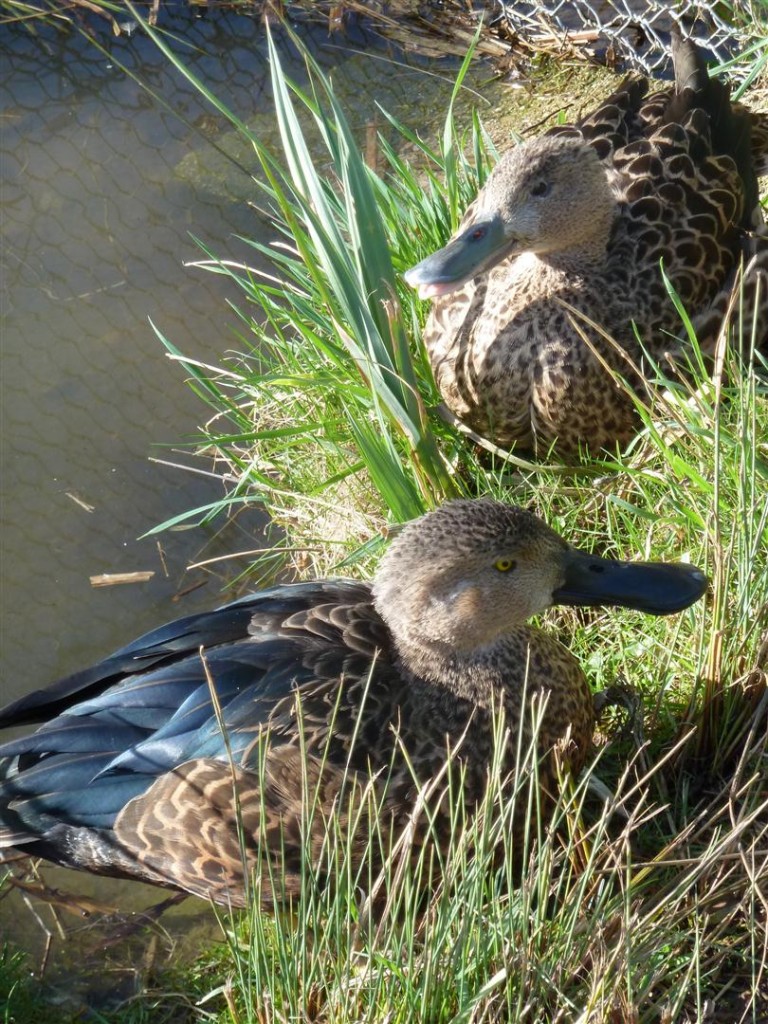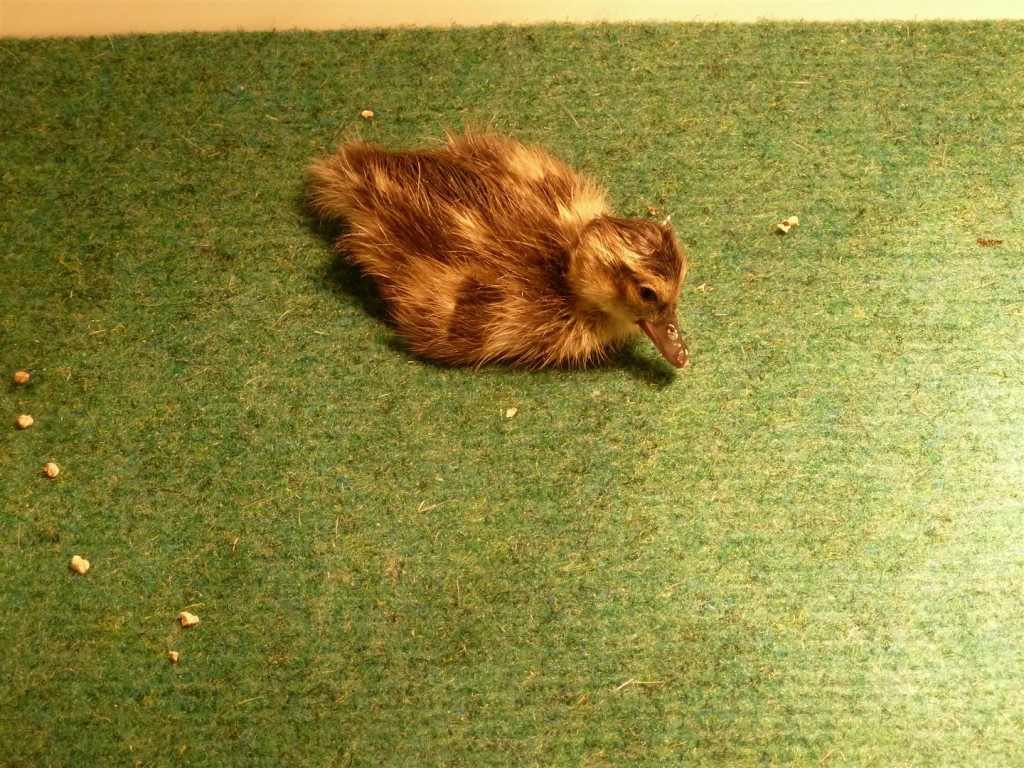Cape shovelers "say no" to breeding defeat.
Mrs. Cape is a dedicated egg layer, but not a very good nest builder. Sadly these two things really need to come hand in hand with being a successful mother...
Her first effort in 2013 was way back in early March, where this cheeky old pair (many of their white facial markings have developed with age) laid a clutch of 4 eggs. I was superbly excited! The eggs were laid so early that we were already dreaming of a second clutch. She made her nest right next to the bit of the fence where staff are required to jumped over in order to feed them. As such we had to disturb them every feed time; annoying!
Ideally, we like to leave eggs with their natural incubating parents for as long as possible to give them the best possible start. No incubator can replicate the natural incubation urges of a duck, but at the same time the eggs are far more vulnerable when outside to gulls, rodents and the whims and fears of the mother. Shoveler eggs have some of the thinnest shells in the waterfowl world. I set in my head a 14 day minimum (50% of the full duration) within which I could not touch the eggs.
Unfortunately, mum started kicking her eggs around. Three times I had to put an egg back in the nest; a rare occurence for a species which is normally guilty of egg burying! After three days of this, I decided she wasn't up to the job whatsoever, and found a suitable surrogate mother in the form of a Puna teal. I went down to collect the eggs, and, found something rather worrying. Mrs. Shov had made her nest up against the fence yes, but also over a hole! Several of her eggs had fallen down inside it, and her full clutch actually numbered 7! (Huge for Shovs!) I think that in trying to scoop them out, she was kicking her healthy ones off! Sadly, all this stress had put her off, and that day she abandoned her nest. Mrs. Puna incubated them as best she could, but all the disturbance meant that only one duckling hatched.
The duckling hatched a little bit sticky, and we were all nervous for a potential yolk sack infection. Against all the odds though, the little mite made it! Photographed here at 3 days, the little bird is now 3 weeks old and has the most wonderful beak you ever saw! I shall try to get a photo of it ASAP.
Cape shoveler are the most desirable shoveler, the rarest in captivity, and the most accidentally hybridised.
Captive collections have a responsibility to look with interest into their stock and make healthy judgements into purity, else, these lovely ducks may not thrive in captivity for much longer. Any captive species lost is a cause for great concern, as future issues in wild populations will not be able to benefit from the knowledge of the captive world.
And the best news of all? Today, the female laid her third egg in the second clutch. I have checked her nest for chasms, and hold out in the hope of greater hatching success in this second clutch.



